Fertilizing your Plumeria plants is crucial to promote healthy growth and vibrant blooms. Whether you choose an organic, natural, or homemade fertilizer, providing the nutrients these tropical beauties need is important. Plumerias are stunning tropical plants that bring beauty and fragrance to any garden or landscape.
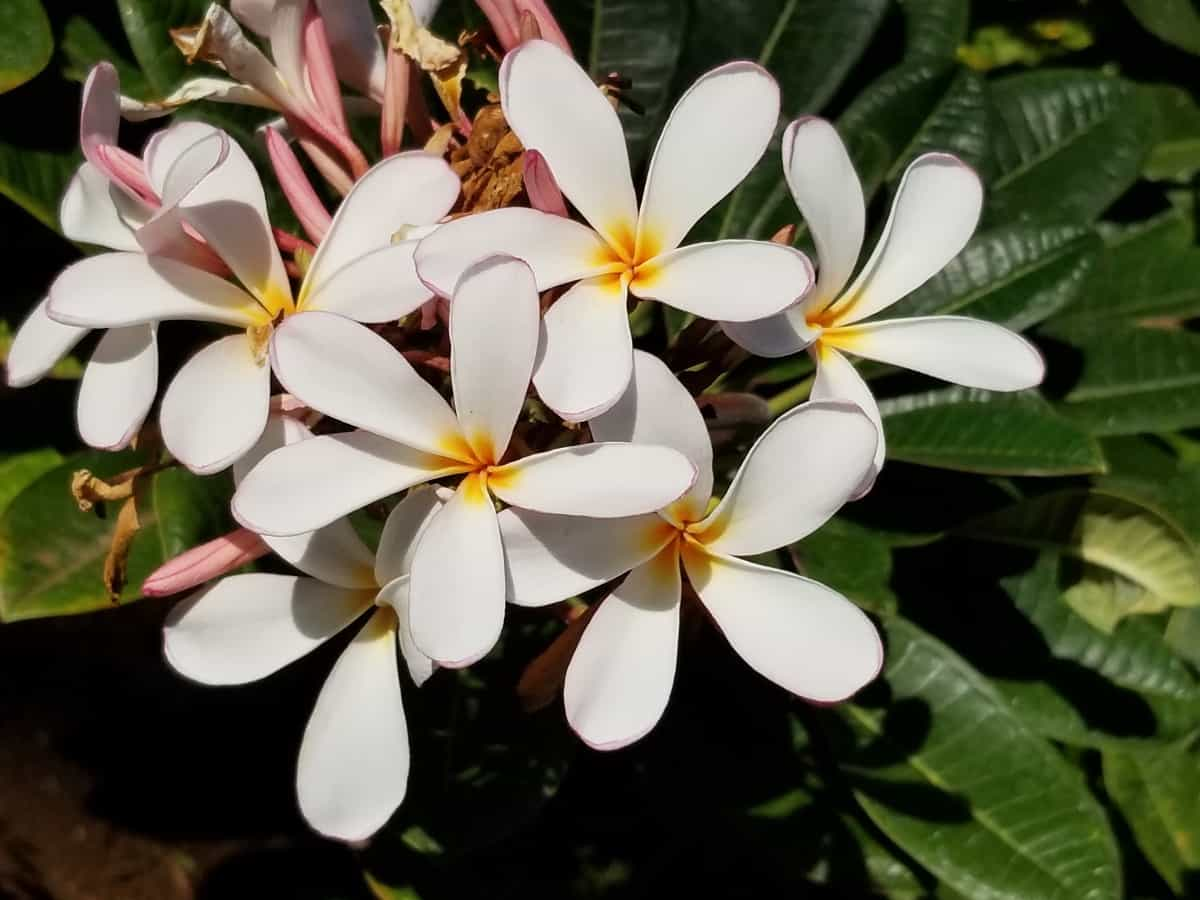
Feeding them the right nutrients through fertilizer ensures their health and vibrant blooms. With proper application techniques and a little experimentation, you’ll be rewarded with healthy, lush foliage and breathtaking blooms from your beloved Plumerias year after year.
Best Fertilizer for Plumeria
Understanding Plumeria Fertilizer
Plumerias are beautiful and vibrant tropical plants that require specific care to thrive. One crucial aspect of their maintenance is understanding Plumeria fertilizer. Fertilizers for Plumerias provide essential nutrients that promote healthy growth, abundant blooms, and overall plant vigor. These fertilizers typically contain a combination of macronutrients like nitrogen, phosphorus, and potassium.
It’s important to understand the Plumeria fertilizer requirements when selecting a fertilizer. Plumeria-specific fertilizers often have higher phosphorus levels, which aids in root development and flower production. Additionally, they may include micronutrients such as iron, magnesium, and manganese to ensure optimal health. When choosing a fertilizer for your Plumerias, consider the plant’s age, soil composition, and nutrient deficiencies.
Organic options like compost or worm castings can be beneficial as they improve soil structure while providing slow-release nutrients. To determine how much fertilizer to apply, follow the product packaging instructions. Remember to water your Plumerias thoroughly before applying any fertilizer.
In case you missed it: How to Use 19-19-19 Fertilizer in Your Garden: Benefits and When to Apply
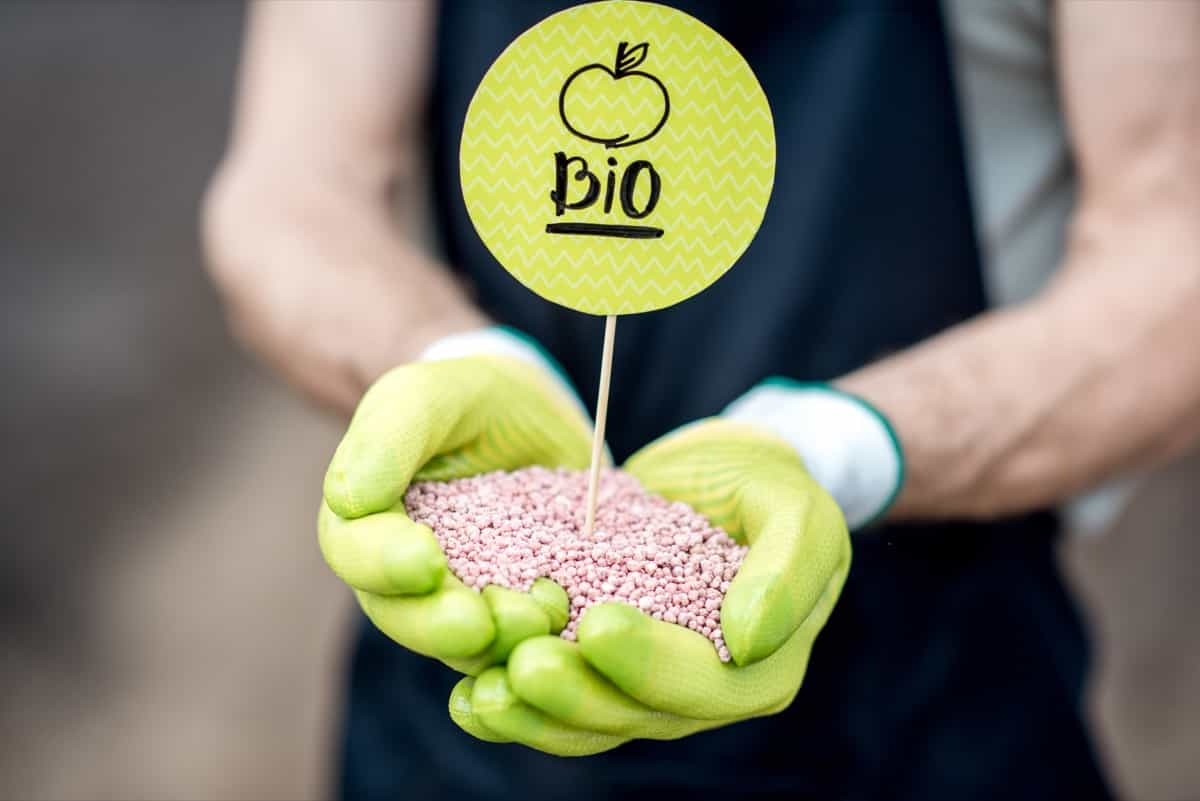
The Importance of NPK Ratio in Plumeria Fertilizer
NPK stands for nitrogen, phosphorus, and potassium. These three elements are vital nutrients that play different roles in the growth and development of plants. The NPK ratio indicates the proportion of these nutrients in a particular fertilizer. Nitrogen promotes leafy green growth, phosphorus supports root development and flower production, and potassium helps with overall plant health and disease resistance. An appropriate balance of these nutrients ensures optimal Plumerias growth, blooming, and overall vigor.
Different stages of plant growth need different nutrient ratios. For example, a higher nitrogen level may be beneficial during active vegetative growth periods. On the other hand, during flowering or fruiting stages, more phosphorus might be needed to encourage abundant blooms. By understanding the Plumeria fertilizer NPK ratio that suits each stage of your Plumeria’s life cycle, you can provide targeted nutrition that meets its needs at any time. This will help ensure healthier plants with vibrant foliage and plentiful blossoms year after year.
Organic Fertilizers for Plumeria
One popular organic option is worm castings. They help improve soil fertility and promote healthy root development in Plumeria plants. Fish emulsion is another effective organic fertilizer for Plumeria. Made from processed fish waste, it is high in nitrogen, which promotes lush foliage growth. The fish emulsion also contains trace minerals that contribute to overall plant health.
Another great organic fertilizer choice is seaweed extract. Seaweed contains a wide range of trace minerals beneficial for plant growth. It enhances nutrient uptake, strengthens plant cell walls, and boosts overall plant health. If you’re looking for an all-purpose organic fertilizer option, look no further than bone meal. Derived from animal bones, bone meal is rich in phosphorus and calcium – essential nutrients for flowering plants like Plumerias. It stimulates flower production and supports strong root systems.
Natural Fertilizers for Plumeria
Naturally fertilizing your Plumeria plants benefits your garden and the environment. Natural fertilizers provide essential nutrients to your Plumerias without harmful chemicals or synthetic additives. One popular natural fertilizer for Plumeria is compost. Compost is made from vegetable scraps, leaves, and grass clippings. It enriches the soil with nutrients, improves its structure, and promotes healthy root development in Plumeria plants.
In case you missed it: Pinstripe Plant Care: Best Fertilizer, Pruning, and Propagation
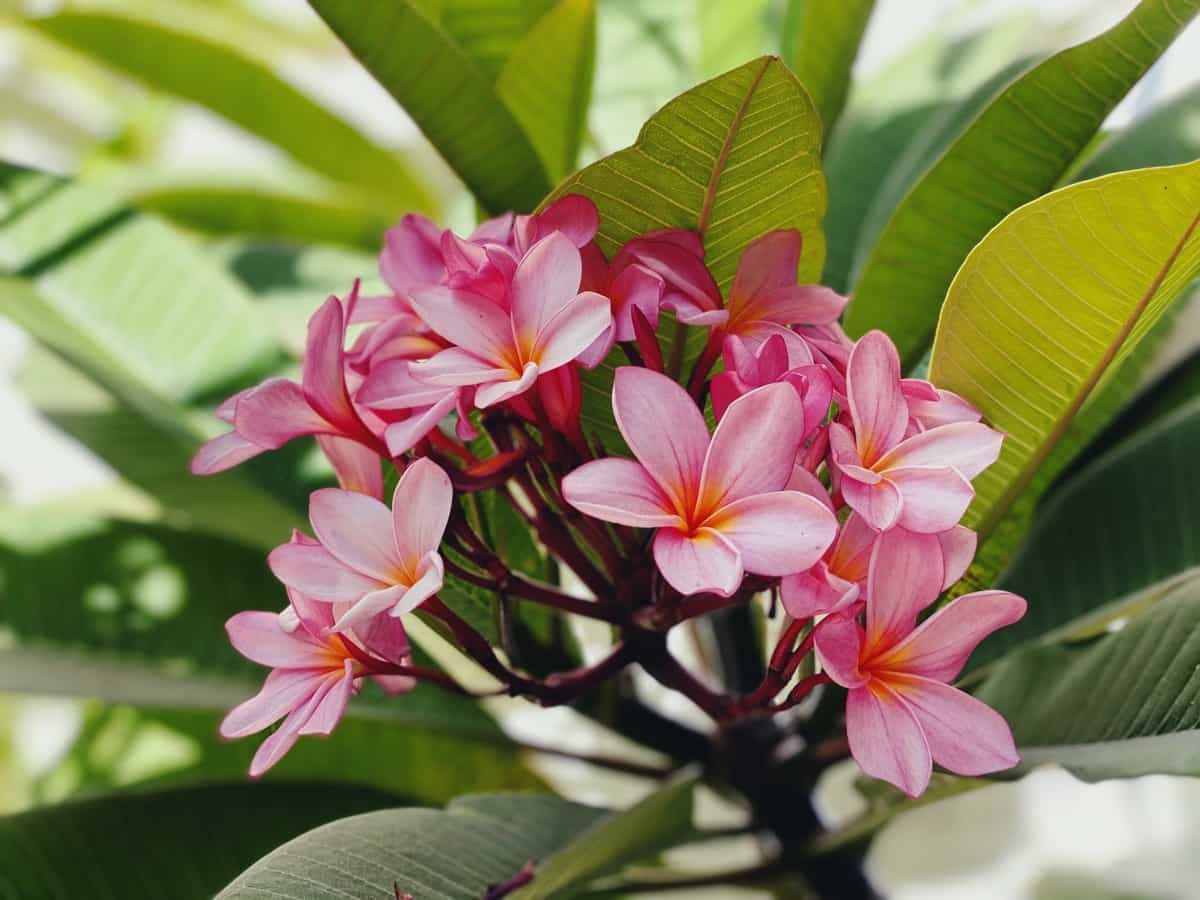
Homemade Fertilizers for Plumeria: Cost-Effective Options
One option is compost tea, made by steeping compost in water. You can apply this nutrient-rich liquid fertilizer directly to the soil or spray it onto the leaves of your Plumeria plants. Another homemade alternative is banana peel fertilizer. Simply chop up banana peels and bury them around the base of your plants. The potassium-rich peels will slowly release nutrients into the soil over time.
Coffee grounds are another excellent homemade fertilizer for Plumerias as they add organic matter and improve drainage in clay soils. Sprinkle used coffee grounds around your plants, being careful not to pile them too high as this may cause water retention issues. Epsom salt is another cost-effective option that provides magnesium sulfate to promote vibrant blooms on your Plumeria plants. Dissolve two to three tablespoons of Epsom salt in a gallon of water and apply it monthly during the growing season.
Best Time to Apply Fertilizer to Plumeria
Knowing the best time to apply fertilizer can significantly affect your plants’ overall health and blooming. The ideal time to apply fertilizer to Plumeria is during its active growing season, typically spring through summer. This is when the plant needs extra nutrients to support its growth and flower production.
It’s important not to fertilize during the dormant period, as this can cause harm rather than benefit. To determine if it’s the right time for fertilizing, keep an eye on your Plumeria’s growth patterns. Once new leaves start emerging and the weather warms up consistently, that’s a good indicator that it’s time for feeding. Another crucial factor to consider is moisture levels in the soil.
Ensure the soil surrounding your Plumeria is adequately moist before applying fertilizer. Dry or waterlogged soil can hinder nutrient absorption and lead to poor results. It’s also essential to remember that moderation is key when applying fertilizer. Over-fertilizing can burn roots and damage plants. Follow package instructions carefully or consult a gardening expert for appropriate amounts.
How to Apply Fertilizer to Plumeria: Techniques and Tips
Before applying fertilizer, you should keep the soil moist. This will help prevent burning the roots with concentrated nutrients. Start by sprinkling the fertilizer evenly around the plant, careful not to get any on the flowers. Once you’ve applied the fertilizer, gently work it into the top layer of soil using a rake or hand tool.
In case you missed it: When and How to Fertilize Your Vegetable Garden
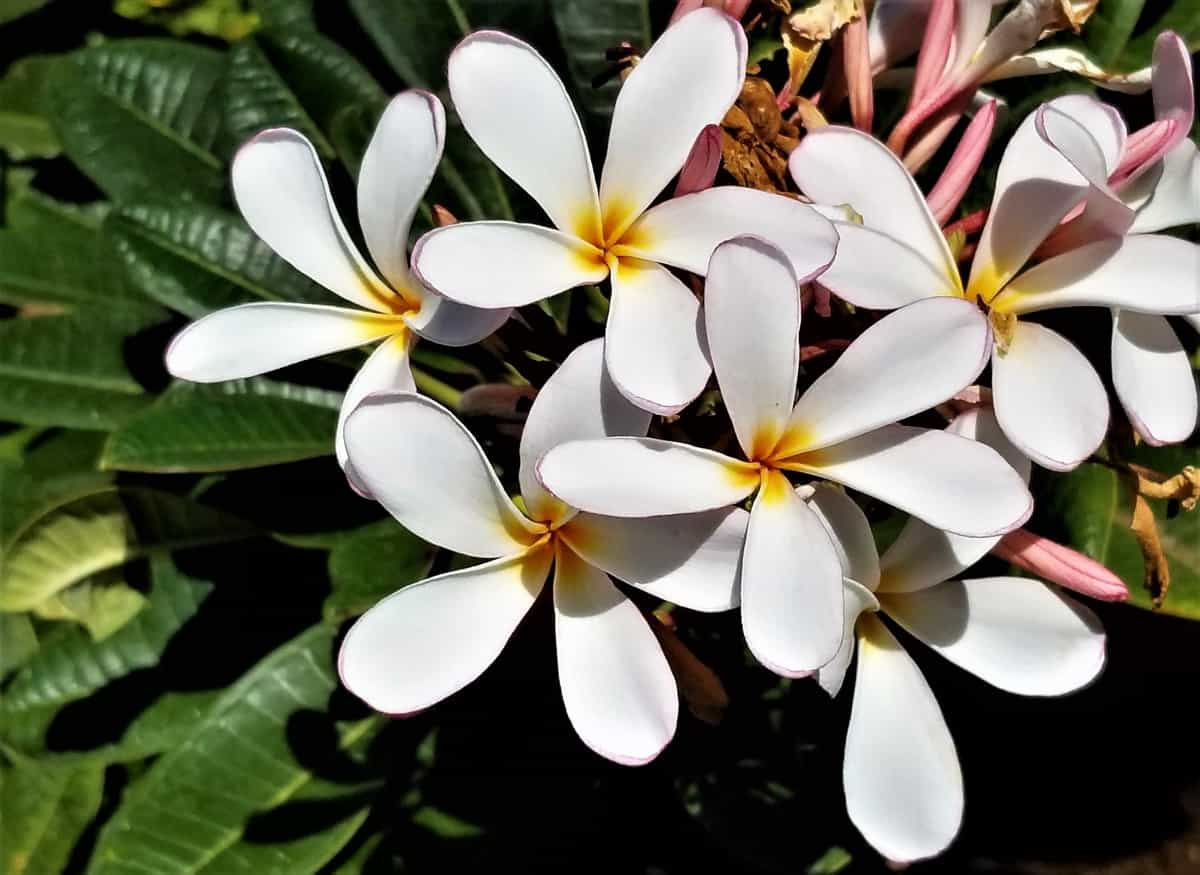
This will help distribute the nutrients more evenly and encourage root uptake. Regarding timing, it’s best to apply fertilizer during active growing periods, such as spring and summer, when Plumerias actively produce new leaves and flowers. Avoid fertilizing during dormant periods in winter when growth slows down.
Remember to follow package instructions for dosage recommendations based on your specific brand of fertilizer. Over-fertilizing can lead to nutrient burn or excessive vegetative growth at the expense of flowering. Regular monitoring of your Plumeria plants is crucial after fertilization. Look for signs of over-fertilization, such as leaf yellowing or browning edges, which may indicate nutrient imbalances or excesses.
Understanding the Role of Nitrogen in Plumeria Fertilizer
Regarding Plumerias, nitrogen plays a significant role in stimulating vegetative growth. You can encourage healthy leaf production and vigorous shoots by providing adequate nitrogen through fertilization. However, striking the right balance is important, as excessive nitrogen can lead to excessive leaf growth at the expense of flower production. Applying too much nitrogen-based fertilizer can result in soft and weak growth prone to diseases or pest attacks. Therefore, it’s crucial not to overdo it when fertilizing your Plumerias with high-nitrogen products.
Phosphorus in Plumeria Fertilizer: Enhancing Flowering and Root Development
Phosphorus is vital in enhancing Plumeria plants’ flowering and root development. This essential nutrient promotes the growth of strong, healthy roots, crucial for absorbing water and nutrients from the soil. Additionally, phosphorus aids in the formation of flowers by stimulating cell division and energy transfer within the plant. Choosing one with a higher phosphorus content is key in Plumeria fertilizer.
Look for fertilizers specifically formulated for blooming plants or those labeled as having a high middle number on the NPK ratio (10-30-10 fertilizer for Plumeria). These formulations ensure an adequate phosphorus supply to support robust flower production and root establishment. Mix phosphorus-rich fertilizer into the top few inches of soil around your Plumeria plant’s root zone to apply it effectively. Be careful not to over-fertilize, as excessive amounts can lead to nutrient imbalances or even burn the roots.
Potassium in Plumeria Fertilizer: Promoting Disease Resistance
Potassium is an essential element in Plumeria fertilizer that plays a crucial role in promoting disease resistance. This micronutrient strengthens the plant’s immune system, making it more resistant to various diseases and pests. When Plumerias receive adequate potassium through fertilization, they develop stronger cell walls, which act as a barrier against invading pathogens.
Additionally, potassium helps regulate stomatal openings, reducing water loss and limiting stress on the plant. Plumerias are better equipped to fight off infections by maintaining optimal hydration levels. Furthermore, potassium aids in the production of proteins and enzymes involved in defense mechanisms within the plant.
In case you missed it: 15 Indoor Plants That Don’t Cause Allergies: Best Hypoallergenic Plants for Indoor Garden
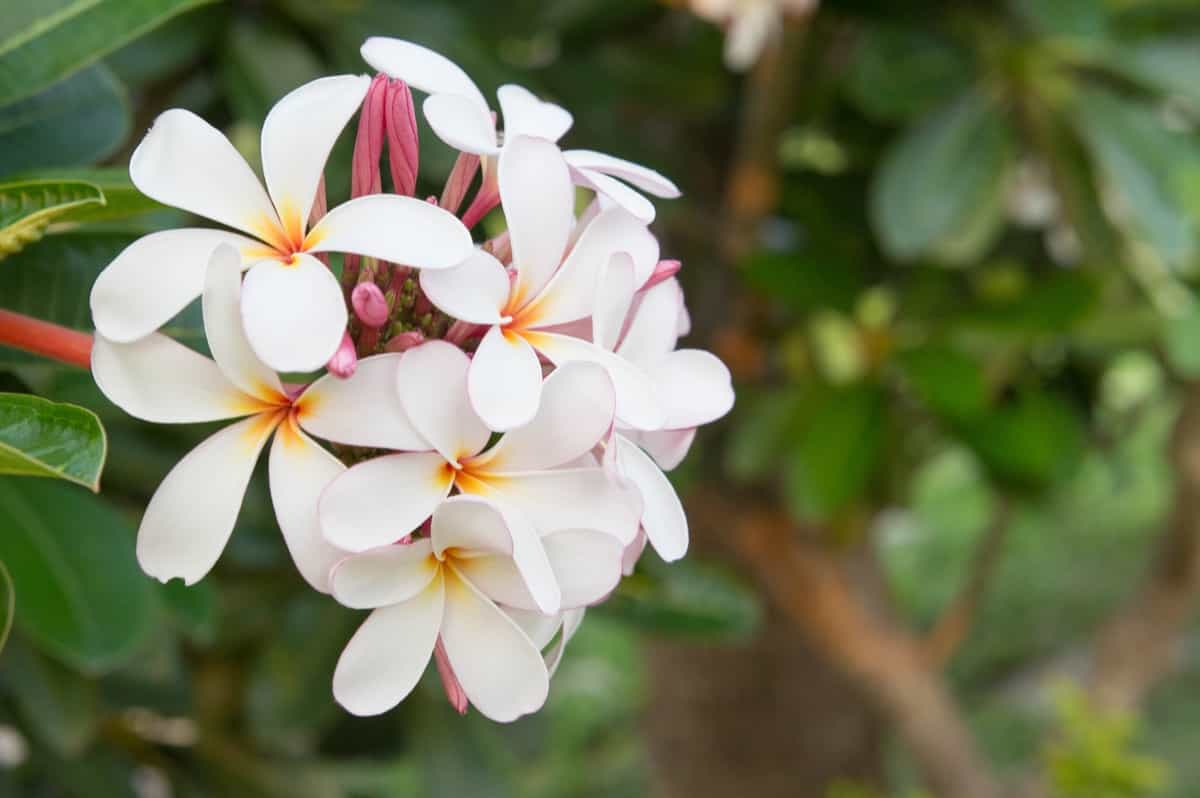
These defensive compounds help combat harmful bacteria and fungi that can cause diseases like leaf spot or root rot. It’s important to note that while potassium promotes disease resistance in Plumerias, excessive amounts can lead to imbalances with other nutrients. Therefore, following recommended application rates and ensuring a balanced NPK ratio for overall plant health is crucial.
Micronutrients in Plumeria Fertilizer: For Optimal Growth and Blooming
Micronutrients play a vital role in Plumeria plants’ overall health and blooming. One key micronutrient that Plumerias need is iron. Iron is crucial for chlorophyll production and photosynthesis. Plumeria leaves may turn yellow or pale white without sufficient iron due to chlorosis. Another important micronutrient is manganese. Manganese helps activate enzymes involved in various metabolic processes within the plant cells. It aids in proper nutrient absorption and utilization by improving root development.
Zinc is yet another micronutrient necessary for healthy Plumeria growth. Zinc plays a significant role in hormone regulation and protein synthesis, which are critical for flower formation and blooming. Copper is essential as it promotes enzyme activity in lignin synthesis, contributing to stem strength and disease resistance. Boron assists with pollination by supporting cell wall integrity during flowering stages.
Common Mistakes to Avoid in Fertilizing Plumeria
One common mistake is over-fertilization. While giving your Plumeria an extra boost with excessive fertilizer might be tempting, this can harm the plant. Over-fertilization can lead to salt build-up in the soil, which can burn the roots and cause nutrient imbalances. Another mistake is using the wrong type of fertilizer. Plumerias have specific nutrient requirements, so using a general-purpose fertilizer may not provide them with what they need.
Choosing a fertilizer specifically formulated for Plumerias is important, ensuring it contains the necessary macro and micronutrients. Timing is also crucial when it comes to fertilizing Plumerias. Applying fertilizer too early or late in their growth cycle can be detrimental. It’s recommended to wait until after the first flush of blooms has finished before applying fertilizer, as this will promote healthy root development.
Furthermore, neglecting proper watering practices while fertilizing can be problematic for Plumerias. Watering immediately after applying fertilizer helps distribute nutrients evenly throughout the soil and prevents potential root burn due to concentrated salts. Failing to read and follow instructions on product labels is another mistake many gardeners make when fertilizing their Plumerias.
Conclusion
Choosing the right fertilizer for the Plumeria plants is essential for their overall health and blooming success. Whether you opt for organic fertilizers, natural options, or homemade concoctions, providing your Plumerias with the necessary nutrients will ensure vibrant flowers and strong root development. Remember to apply fertilizer appropriately and follow proper techniques to prevent over-fertilization.
In case you missed it: 19 Stunning French Flowers That are Easy to Grow at Home
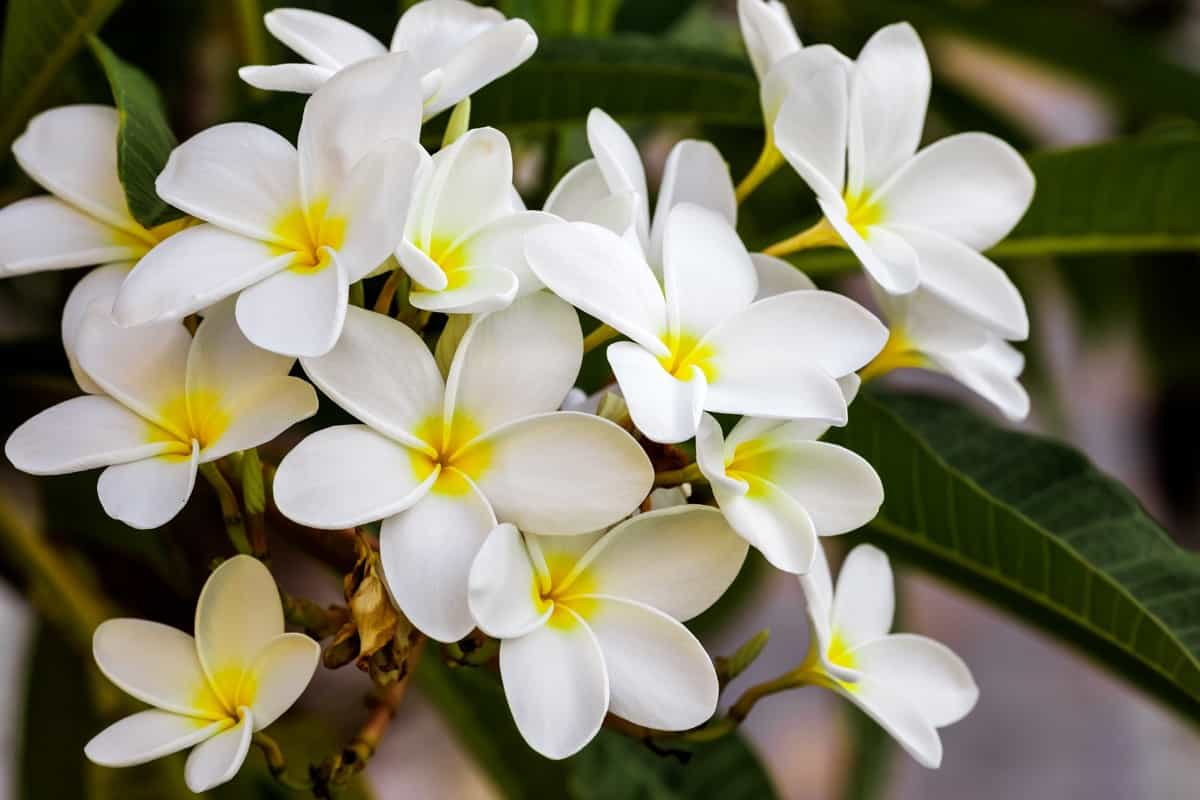
Understanding the role of nitrogen, phosphorus, potassium, and micronutrients in Plumeria fertilizer can help you tailor your feeding regimen to meet your plant’s specific needs. By maintaining a balanced approach to fertilizing your Plumerias and paying attention to their requirements, you’ll be rewarded with beautiful blooms that will make any garden come alive with color and fragrance.
- How to Grow Tomatoes Organically at Home: A Comprehensive Guide
- Organic Gardening on a Budget: Low-Cost Methods and Materials
- Gongura Seed Germination and Planting Methods
- Cabbage Seed Germination and Selection
- Broccoli Seed Germination and Selection
- Asparagus Seed Germination and Variety Selection
- Seasonal Flower Gardening: Best Practices for Spring, Summer, Fall, and Winter
- How to Grow Hibiscus from Flower
- Plantation Ideas for Home Decoration: A Beginners Guide
- Flower Garden Designs and Layouts for Beginners
- Planting and Spacing Techniques in Papaya: A Beginner’s Guide
- Growing Gold: Essential Techniques for Planting Pineapples
- How to Make Kalanchoe Plant Bushy: Home Remedies and Solutions
- 11 Reasons Why Your Gardenia is Not Blooming: Home Remedies and Solutions
- Eco Elegance: The Guide to Designing a Drought-Tolerant Landscape
- Gardening on a Slope: Strategies for Hillside Landscaping
- Nourish and Flourish: Top Organic Mulches for Thriving House Plants
- Everything You Want to Know about Indian Mogra Flower: Discover Uses and Growing
- Green Thumb Success: Expert Tips for Cultivating Greenhouse Pumpkins All Year Round
- Maximize Growth & Flavor: The Ultimate Guide to Companion Planting in Herb Gardens
- How to Control Rhododendron Problems Naturally: Home Remedies and Organic Ways to Fix Them
- Natural Magic: The Remarkable Benefits of Cinnamon for Plants
- Best Steps to Revive Dying Tulip with Natural and Organic Treatment
- 10 Reasons Why Your Angel Trumpet is Not Blooming: Remedies and Treatment
- How to Fix Periwinkle Leaf and Flower-Related Problems: Natural Remedies and Solutions
- How to Fix Zinnias Leaf and Flower Problems: Discover Natural and Home Remedies
- Organic Steps to Induce Lemon Tree Flowers: A Comprehensive Guide
- Bloom Booster: Crafting the Perfect Homemade Bougainvillea Fertilizer
- Optimizing Growth: A Guide to Applying NPK Fertilizer for Potted Plants
- 10 Best Homemade Fertilizers for Rubber Plant: DIY Recipes and Application Method
- How to Boost Female Pumpkin Flowers: Effective Steps for More Flowers and High Yields
- Transform Your Indoor Garden: Top Benefits of Pink Salt for Houseplants
- 10 Best Homemade Fertilizers for Peacock Plants (Calathea): Easy DIY Guide
- Unlock Blooms: 9 Reasons Why Your Potted Chrysanthemum is Not Blooming
- 8 Reasons Why Your Potted Hibiscus is Not Blooming: Fix it with Simple Solutions
- Unlock Blooms: 9 Key Reasons Your Potted Frangipani Won’t Flower